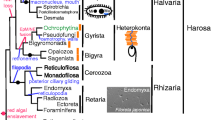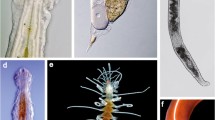Abstract
Comparative analyses of the mitochondrial tRNA sequences of the sea urchins Arbacia lixula, Paracentrotus lividus and Strongylocentrotus purpuratus revealed that conserved nucleotides may be involved in determining the typical L-shaped spatial conformation of tRNAs. These results shed light on the specific tertiary interactions that allow the folding of the atypical mitochondrial tRNAs into a functional form. A consensus mitochondrial tRNA secondary structure was derived. It shows the presence of nucleotides virtually conserved only in these organisms that represent a sort of molecular signature in sea urchins and suggests a possible physiological role. Finally, we speculate that the non-canonical structure of animal tRNAs, as well as the deviations from the universality of the genetic code, may be due to the reduction in size of the metazoan mitochondrial genome, with the concomitant acquisition of new functions by the mitochondrial tRNAs.
Similar content being viewed by others
Author information
Authors and Affiliations
Additional information
Received: 3 December 1995/17 April 1996
Rights and permissions
About this article
Cite this article
Giorgi, C., Martiradonna, A. & Saccone, C. Evolutionary analysis of sea urchin mitochondrial tRNAs: folding of the molecules as suggested by the non-random occurrence of nucleotides. Curr Genet 30, 191–199 (1996). https://doi.org/10.1007/s002940050120
Issue Date:
DOI: https://doi.org/10.1007/s002940050120




